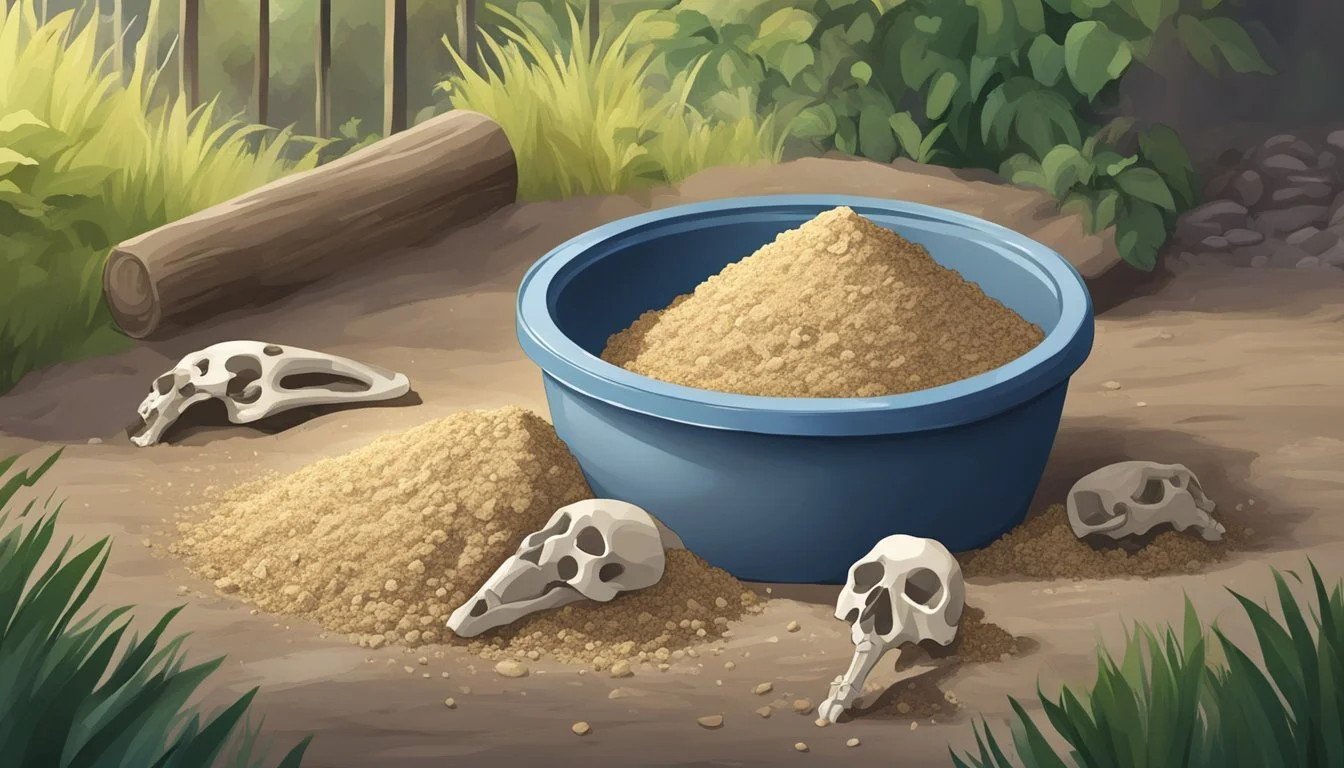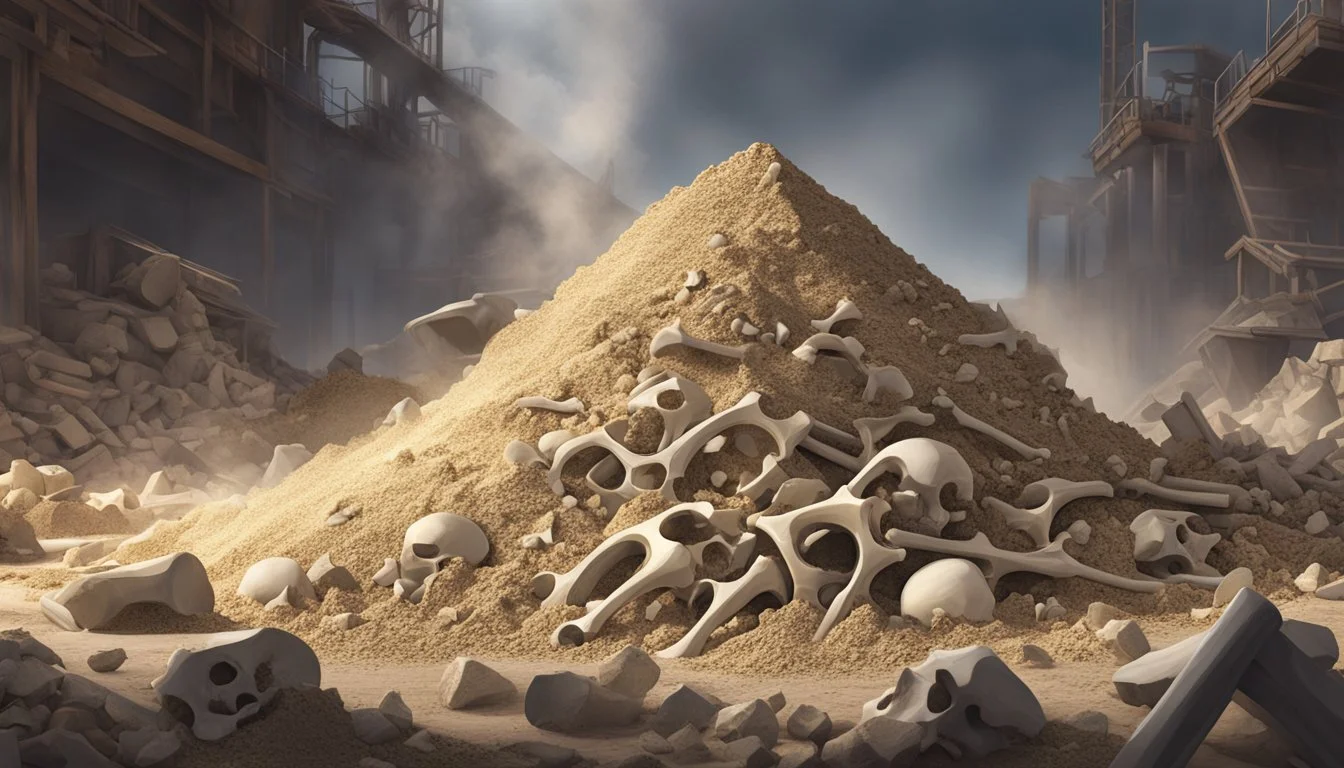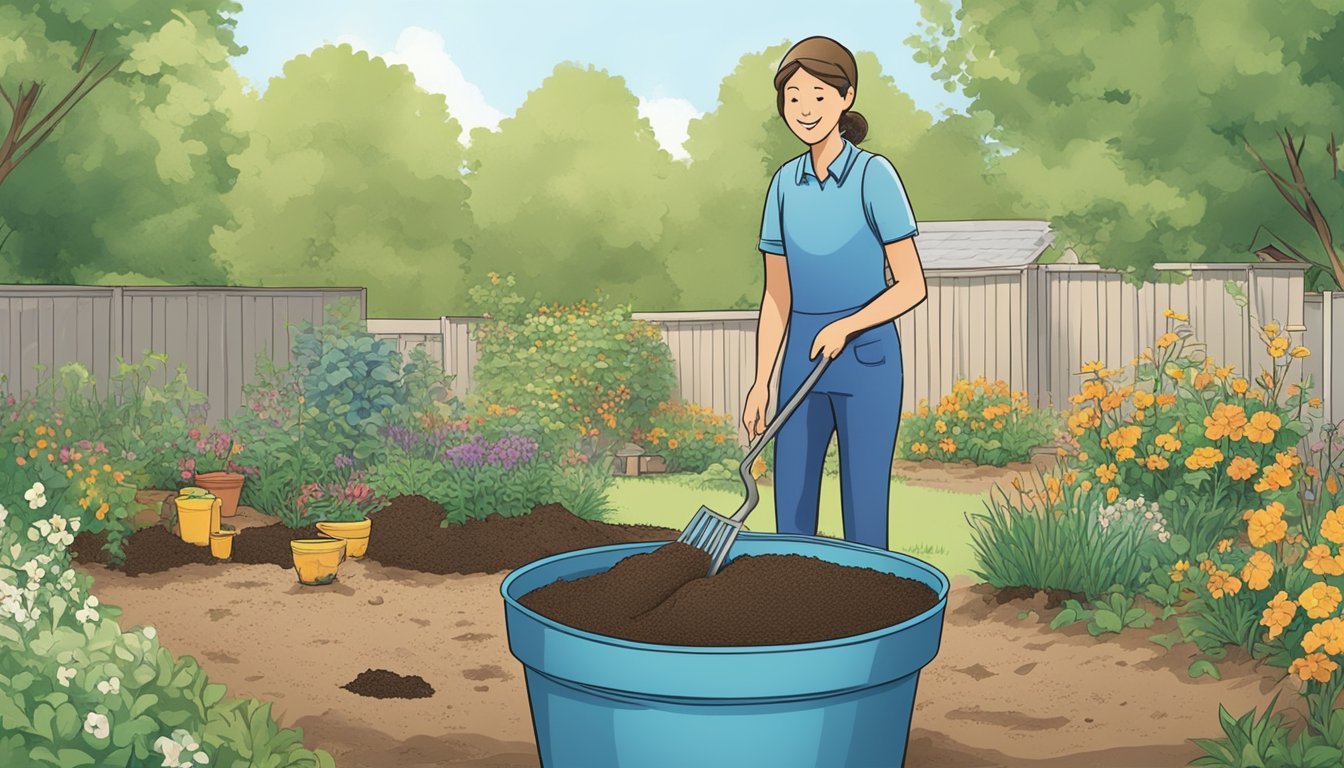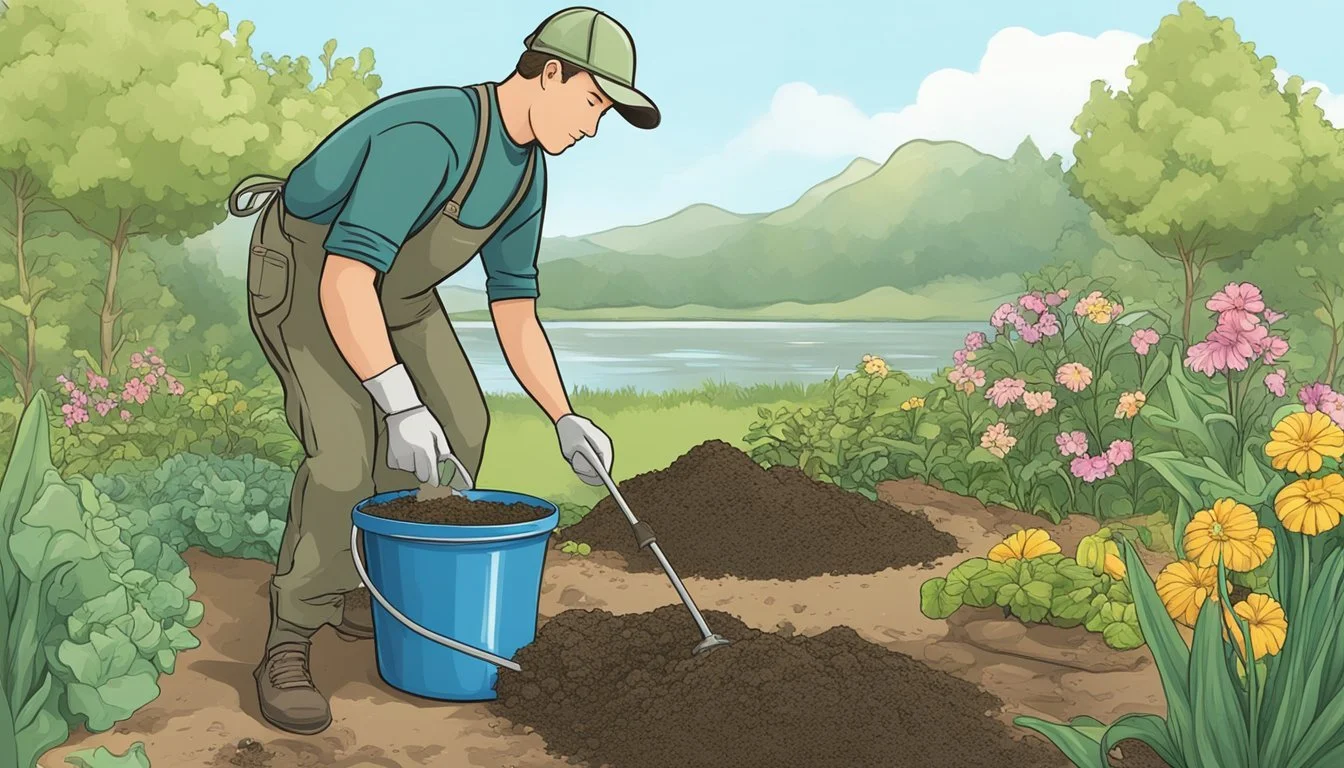How to Make Nutrient-Dense Bone Meal Fertilizer
Boost Your Garden’s Health
Bone meal fertilizer is a valuable addition to garden soil, prized for its high content of essential nutrients, particularly phosphorus and calcium. These nutrients play a crucial role in the development of strong root systems and robust plant growth. As an organic option, bone meal is especially favored by gardeners seeking to enrich their soil without relying on synthetic chemicals.
Making bone meal involves processing animal bones, which are typically byproducts of other industries, such as the cattle or poultry industry. Once cleaned and ground into powder, the bone meal can be applied directly to the garden soil to release nutrients over time. This slow-release property ensures that plants have access to vital nutrients throughout the growing season.
For those aiming to create nutrient-dense soil in their organic garden, incorporating bone meal is an effective strategy. It supports the growth of healthier, more resilient plants, and ultimately leads to a more productive garden. Gardeners incorporate bone meal into their soil management practices not only to feed their plants but also to improve soil structure and promote beneficial microbial activity.
Understanding Bone Meal Basics
Before diving into how to create bone meal fertilizer, it's essential to understand what bone meal is, its benefits in the garden, and the nutrients it provides.
What Is Bone Meal?
Bone meal is a powdery substance made from the finely ground bones of animals. It is a byproduct of the meat industry, where bones that cannot be used for consumption are repurposed into a garden amendment. This process of transformation ensures that essential nutrients, otherwise trapped in the skeletal remains, become accessible for plant uptake.
Benefits of Bone Meal in the Garden
The garden derives significant value from the addition of bone meal. It gradually releases phosphorus—a critical macronutrient—into the soil, which supports the development of strong root systems. Additionally, it supplies calcium, essential for cell wall structure and overall plant vigor. Bone meal can enhance bloom production in flowers and fortify fruit and vegetable plants for a more bountiful harvest.
Nutrient Profile: Phosphorus, Calcium, and More
Bone meal is rich in certain key nutrients vital for plant health:
Phosphorus (P): This macronutrient is crucial for the regulation of protein synthesis and energy transfer within plants, leading to healthier root systems and improved plant growth.
Calcium (Ca): Plants require calcium to maintain proper cell wall strength and stability, helping mitigate the effects of various plant stresses.
Trace Elements: While phosphorus and calcium are the primary nutrients, bone meal also includes trace elements such as magnesium and zinc, which are essential in smaller quantities for well-rounded plant nutrition.
By incorporating bone meal into a garden regimen, one ensures that plants receive a balanced spread of both macronutrients and micronutrients, supporting various aspects of their development and contributing to sustainable soil fertility.
Soil Health Fundamentals
Before enriching the garden with bone meal fertilizer, it is crucial to understand the fundamental aspects of soil health, including soil pH, nutrient levels, and the presence of organic matter and microorganisms that benefit plant growth.
The Importance of Soil pH
Soil pH is a measure of the acidity or alkalinity of the soil and significantly affects nutrient availability to plants. Optimal pH levels for most plants range between 6.0 and 7.0, which allows for the best nutrient uptake. A pH higher than 7 can hinder plants' access to the nutrients contained in bone meal, particularly calcium and phosphorus.
Soil Test: Measuring Nutrient Levels
Conducting a soil test provides crucial information on existing nutrient levels and helps determine what adjustments, if any, are needed for optimal plant health. The test results inform gardeners of deficits in nitrogen, phosphorus, potassium, as well as pH imbalance. Application rates for amendments, including bone meal, can be correctly tailored based on soil test data.
Organic Matter and Microorganisms In Soil
The presence of organic material in soil improves its structure, water retention, and nutrient-holding capacity. Organic matter serves as food for beneficial microorganisms, whose activity enhances soil fertility and creates a hospitable environment for roots. Incorporating bone meal into soil with healthy levels of organic matter and microorganisms can boost its efficacy as a slow-release fertilizer.
Preparation and Application Techniques
Preparing your own bone meal and applying it correctly can significantly boost your garden's productivity. This section details the essential steps and best practices.
Creating Your Own Bone Meal
To create bone meal at home, one must start with clean bones free of meat and fat. Bones can be pressure cooked or boiled to remove any remaining organic material. After cleaning, the bones are dried, either through natural air drying or by baking them in an oven at 250°F for about 30 minutes. Once dry, they are crushed into a fine powder, which can be done using a blender or mortar and pestle.
Steps for Creating Bone Meal:
Clean the bones thoroughly.
Dry the bones via oven or natural methods.
Crush the bones into a powder.
How to Properly Apply Bone Meal to Your Garden
Bone meal fertilizer is best applied as a soil amendment at the time of planting. For established plants, it can be incorporated into the soil at the root zone. The typical application rate for bone meal is about 10 pounds per 100 square feet of soil. It should be evenly spread over the garden beds and mixed well with the top layers of soil to prevent any risk of fertilizer burn.
How to Apply:
During planting: Mix with soil at root level.
For established plants: Spread around the root zone and mix into the soil.
Safety Measures and Dosage Tips
Safety is paramount when handling bone meal, as it can be a source of pathogens if not properly processed. Ensure the bone meal is well-composted before adding it to your garden to reduce risk. As an organic fertilizer, too much bone meal can cause an imbalance in soil nutrients, so it's important to follow recommended application rates and to conduct a soil test before use. Bone meal is rich in phosphorus and calcium, which are crucial for plant development, but it has low nitrogen content, meaning it may need to be supplemented with other organic fertilizers or compost for a balanced nutrient profile.
Dosage Tips:
Compost first: Compost bone meal to reduce pathogens.
Balance nutrients: Use soil tests to guide application.
Supplement nitrogen: Consider adding compost or nitrogen-rich amendments.
Complementary Organic Fertilizers
In enhancing the nutrient value of garden soil, the proper selection and combination of organic fertilizers are crucial to supplement bone meal’s high phosphorus content.
Combining Bone Meal with Other Organic Fertilizers
Bone meal is rich in phosphorus and calcium, but gardens often require a more balanced nutrient profile. Combining it with other organic fertilizers can provide a fuller spectrum of nutrients. For instance:
Nitrogen: Cottonseed meal and blood meal are excellent sources of nitrogen. Cottonseed meal has an added benefit of slightly acidic action, which is beneficial for certain plants.
Potassium: Compost and kelp meal are good sources of potassium and can complement bone meal which lacks this nutrient.
Using these fertilizers together fosters a comprehensive nutrition plan for the garden:
Organic Fertilizer Primary Nutrient Application Rate Bone Meal Phosphorus 10 pounds per 100 square feet Cottonseed Meal Nitrogen 1-2 pounds per 100 square feet Blood Meal Nitrogen 1-3 pounds per 100 square feet Compost Balanced NPK 3-4 inches layer on the top of the garden bed
Using Compost and Manure Effectively
Compost and manure are nutrient-rich organic fertilizers that improve soil structure and fertility. While adding bone meal provides phosphorus, compost contributes a more balanced NPK (Nitrogen, Phosphorus, Potassium) ratio. Manure, on the other hand, should be well-composted to avoid the burn effect from the fresh manure's high nitrogen content. Here’s how to utilize them:
Compost: Introduce a 3-4 inch layer of compost to garden beds annually to enhance soil health.
Manure: Mix well-rotted manure into the garden soil before planting. Ensure it's aged at least six months to a year.
Additional organic fertilizers like fish emulsion or compost tea can be used as liquid feeds throughout the growing season. These can provide a quick nutrient boost to complement the slower-release fertilizers such as bone meal.
Maximizing Plant Growth and Health
To enhance plant growth and health, it's crucial to provide a balanced supply of nutrients and foster robust root systems. Bone meal fertilizer is advantageous for this purpose as it offers a concentrated source of essential macronutrients and micronutrients.
Optimizing Macronutrient and Micronutrient Levels
Macronutrients such as nitrogen, phosphorus, and potassium are fundamental to plant health and are abundantly supplied by bone meal, especially phosphorus. On the other hand, micronutrients like calcium and magnesium play pivotal roles in cellular function and overall plant vitality. Bone meal provides a rich source of calcium, which is paramount for healthy cell walls and membrane function.
Here’s a quick overview of the nutrient content in bone meal:
Phosphorus (P): Aids in energy transfer and genetic material production.
Calcium (Ca): Essential for cell wall structure and stability.
Magnesium (Mg): Vital for chlorophyll production and enzyme activation.
By incorporating bone meal fertilizer into the garden, growers ensure that plants receive these crucial nutrients, leading to improved overall growth and vigor.
Encouraging Strong Root Development and Disease Resistance
The application of bone meal supports root growth due to its phosphorus content, which stimulates root systems, resulting in a denser and more extensive network. This bolstered root development paves the way for enhanced water and nutrient uptake, underpinning overall plant health and resilience. Further, healthy root systems are instrumental in building disease resistance, as they facilitate the efficient absorption of nutrients and water needed to combat pathogens and stresses.
Moreover, the presence of micronutrients such as iron — responsible for essential processes like chlorophyll synthesis — contributes to the plant's disease-fighting capabilities, while magnesium serves as a central component of the chlorophyll molecule, key to photosynthesis. Adequate nutrient levels in the soil buffer plants against common soilborne diseases and support their ability to withstand unfavorable conditions.
Addressing Specific Garden Needs
When utilizing bone meal fertilizer in your garden, it's essential to consider the specific nutritional demands of various plant groups. Bone meal is especially rich in phosphorus, which is crucial for the healthy development of flowering and fruiting plants, and it also provides a slow-release form of calcium and nitrogen, beneficial for a wide range of vegetables.
Boosting Flowering and Fruiting
Plants during their flowering and fruiting stages have high phosphorus requirements. Bone meal, as a phosphorus-rich supplement, is ideal for flowers and fruit-bearing plants. By amending the soil with bone meal, gardeners encourage robust blooms and a bountiful fruit harvest. Appropriate application rates may vary, but a typical guideline suggests using 10 pounds per 100 square feet of soil, ensuring it is well-integrated into the soil.
Providing Essential Nutrients for Vegetables
Vegetable gardens thrive on balanced nutrition, and bone meal can provide several key nutrients that vegetables crave:
Phosphorus: Essential for root development, particularly in root vegetables like carrots and onions.
Calcium: Important for preventing blossom end rot in tomatoes and peppers.
Nitrogen: A component of chlorophyll, nitrogen is vital for leafy greens to maintain their vibrant color and growth.
Incorporate bone meal into the soil before planting season to give vegetables a healthy start.
Caring for Acid-Loving and Alkaline-Preferring Plants
Bone meal inherently has an alkaline pH, which can influence soil acidity levels. For acid-loving plants such as azaleas and blueberries, use bone meal with caution, balancing with other soil amendments to maintain the desired acidity. On the other hand, plants preferring alkaline soil may benefit more directly from bone meal application, as it can help in raising the soil pH over time. Regular soil testing is recommended to monitor pH levels and ensure that plants are receiving the appropriate nutrients for their specific pH preferences.
Environmentally Friendly Gardening Practices
Incorporating environmentally friendly practices in gardening ensures the use of natural fertilizers that benefit not only plants but also soil and local ecosystems. These practices can greatly reduce reliance on chemical fertilizers, which often come with negative environmental impacts.
Natural Fertilizer Alternatives to Chemicals
Natural fertilizers serve as a sustainable option for nourishing garden plants. Unlike chemical fertilizers, they release nutrients slowly, reducing the risk of over-fertilization and minimizing runoff that can pollute water bodies.
Bone Meal: Rich in calcium and phosphorus, bone meal is a byproduct of the beef industry. It improves soil fertility and promotes robust plant growth.
Compost: A mixture of decomposed organic material, compost provides a wide array of nutrients, enhancing soil structure and water retention.
Green Manure: Cover crops such as clover and vetch, when tilled back into the soil, enrich it with nitrogen and organic matter.
These alternatives maintain soil health and support the environment. Gardeners often mix these materials with soil or use them as top dressing for plants.
Understanding the Ecosystem: Soil, Plants, and Organisms
Healthy gardens thrive on the complex interplay between soil, plants, and organisms. Organic gardening emphasizes this relationship, considering how to sustain and enhance the natural ecosystem.
Soil: It isn't just dirt but a living, breathing entity teeming with microorganisms, fungi, and insects. These components work together to decompose organic matter, recycle nutrients, and support plant health.
Plants: They contribute to this ecosystem through photosynthesis, root exudates, and leaf litter, which in turn feed soil organisms.
Organisms: The diverse life in the soil, from bacteria to earthworms, plays a crucial role in nutrient cycling, soil aeration, and disease suppression.
Maintaining this delicate balance is key to environmentally friendly gardening practices. Gardeners can ensure this balance by choosing natural fertilizers like bone meal that not only feed the plants but also contribute to the overall health of the ecosystem.
Troubleshooting Common Issues
When making and using bone meal fertilizer, gardeners sometimes face problems such as nutrient burn, pest invasions, and the complexities of different soil textures. Addressing these issues promptly ensures optimal plant health and soil quality.
Preventing Nutrient Burn and Overfertilization
Nutrient Burn: If plants exhibit brown tips or yellowing leaves, they might be suffering from nutrient burn. This can occur if bone meal is over-applied because it is high in phosphorus.
Solution: Use soil testing to determine nutrient needs before applying bone meal.
Application Rates: Stick to the recommended rate of 10 pounds per 100 square feet, working it into the soil and watering thoroughly.
Dealing with Pests and Weeds
Pests: While bone meal is generally not attractive to pests, improper storage or over-application can attract unwanted visitors such as rodents or dogs who are enticed by the smell.
Storage: Store bone meal in a sealed container away from animals.
Application: Ensure it's thoroughly mixed into the soil to reduce odor attraction.
Weeds: Fertilizers can sometimes promote weed growth if not applied correctly.
Top-Dressing: Carefully top-dress your plants with bone meal to feed them without encouraging weeds.
Adjusting Fertilization in Varied Soil Textures
Different soil textures, from sandy to clay, can affect the efficiency of bone meal fertilizer.
Sandy Soil:
Observation: Sandy soils drain quickly and may leach nutrients.
Method: Combine bone meal with organic matter to improve nutrient retention.
Clay Soil:
Issue: Bone meal nutrients can become less available in the tightly packed particles of clay soil.
Strategy: Incorporate the bone meal deeply to facilitate nutrient uptake.






